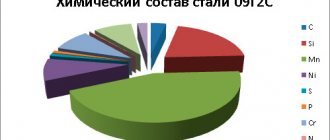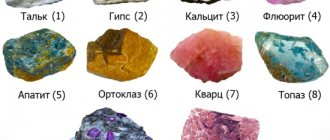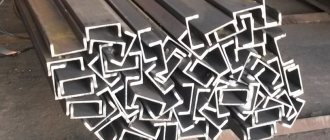Characteristics of steel grade 10
Steel 10 is a structural high-quality carbon steel, weldable without restrictions.
Welding is carried out without heating and without subsequent heat treatment, methods: manual arc welding, automatic submerged arc welding and gas protection, CTS, ESW. The plasticity of the metal allows them to be used for the manufacture of stamped parts and components. To produce industrial quantities of goods, cold stamping technology is used. Not prone to flake sensitivity, no tendency to temper brittleness. Hardness of steel 10: HB 10 -1 = 143 MPa. Cutting machinability In the hot-rolled state at HB 99-107 and σB = 450 MPa, Kυ hard alloy. = 2.1, Kυ b.st. = 1.6. It has found its application in the production of pipes and fasteners for boilers and pipelines of thermal power plants; pipe fasteners for nuclear power plants, fasteners for steam and gas turbines are made from steel 10. When using chemical-thermal treatment, the range of applications expands sharply; bushings, spring ears, diaphragms, washers, screws, parts operating up to 350 ° C are made from it, which are subject to the requirements of high surface hardness and wear resistance with low core strength. A high endurance limit determines the use of the material in the manufacture of critical parts that are designed for long-term operation. Forging is carried out at temperatures from 1300 to 700 0C, cooling in air.
General information about steel hardening technology
The main goals achieved by the hardening + tempering complex:
- increased hardness;
- increasing strength characteristics;
- reduction of ductility to an acceptable value;
- the possibility of using hollow products instead of solid ones, which allows reducing the weight of the metal product and the metal intensity of the production process.
Main stages of hardening:
- heating to temperatures at which the structural state of the metal changes;
- shutter speed set in the technological map;
- cooling at a rate that ensures the formation of a given crystal structure.
After hardening, tempering is carried out, which consists of heating the metal to temperatures below the line of phase transformations, with a further slow decrease in temperature. The result of heat treatment is influenced by:
- heating temperature;
- rate of temperature rise;
- holding period at quenching temperatures;
- cooling medium and rate of temperature decrease.
The key parameter is the heating temperature, on which the restructuring and formation of a new structural lattice depends. Based on the depth of action, hardening is divided into volumetric and surface. In mechanical engineering, volumetric hardening is usually used, after which the hardness of the surface and core differs slightly. Surface heat treatment is in demand for parts for which high surface hardness and a viscous core are important.
Decoding steel grade 10
Interpretation of steel: Structural high-quality carbon steels are produced in converters or in open-hearth furnaces. The designation of these steel grades begins with the word “Steel”. The next two numbers indicate the average carbon content in hundredths of a percent; numbers 10 indicate a content of about 0.1 percent.
| Long and shaped rolled products | GOST 8510-86; GOST 8239-89; GOST 10551-75; GOST 8240-97; GOST 2879-2006; GOST 2591-2006; GOST 2590-2006; GOST 8509-93; GOST 1133-71; GOST 11474-76; GOST 9234-74; |
| Sheets and strips | GOST 6765-75; GOST 14918-80; GOST 19903-74; GOST 82-70; GOST 16523-97; GOST 103-2006; |
| Ribbons | GOST 3560-73; |
| Long and shaped rolled products | GOST 7417-75; GOST 8560-78; GOST 8559-75; GOST 1050-88; GOST 1051-73; GOST 14955-77; GOST 10702-78; |
| Sheets and strips | GOST 4405-75; GOST 10885-85; GOST 1577-93; GOST 4041-71; |
| Ribbons | GOST 19851-74; GOST 10234-77; GOST 503-81; |
| Steel pipes and connecting parts for them | GOST 22786-77; GOST 8638-57; GOST 8645-68; GOST 53383-2009; GOST 24950-81; GOST 6856-54; GOST 30564-98; GOST 30563-98; GOST 8646-68; GOST 23270-89; GOST 8644-68; GOST 11249-80; GOST 20295-85; GOST 5005-82; GOST 8642-68; GOST 10707-80; GOST 1060-83; GOST 550-75; GOST 8639-82; GOST 8731-87; GOST 8732-78; GOST 8733-74; GOST 8734-75; GOST 12132-66; GOST 9567-75; GOST 3262-75; GOST 14162-79; GOST 13663-86; GOST 10705-80; GOST 10704-91; GOST 5654-76; |
| Low carbon steel wire | GOST 5663-79; GOST 1526-81; GOST 792-67; GOST 5437-85; |
| Medium and high carbon steel wire | GOST 17305-91; GOST 9389-75; GOST 7372-79; GOST 26366-84; GOST 3920-70; GOST 9850-72; |
| Metal mesh | GOST 9074-85; |
What steels are hardened?
Not all steel grades can be hardened. Grades with a carbon content below 0.4% practically do not change hardness at quenching temperatures, so this method is not used for them. Hardening technology is most often used for tool steels.
Table of correct quenching and tempering conditions for certain types of tool steels
| steel grade | Steel hardening temperature | Cooling medium after quenching heating | Holiday temperature | Cooling environment after tempering |
| U7 | 800°C | water | 170°C | water, oil |
| U7A | 800°C | water | 170°C | water, oil |
| U8, U8A | 800°C | water | 170°C | water, oil |
| U10, U10A | 790°C | water | 180°C | water, oil |
| U11, U12 | 780°C | water | 180°C | water, oil |
| P9 | 1250°C | oil | 580°C | air in the oven |
| P18 | 1250°C | oil | 580°C | air in the oven |
| ШХ6 | 810°C | oil | 200°C | air |
| ШХ15 | 845°C | oil | 400°C | air |
| 9ХС | 860°C | oil | 170°C | air |
Mechanical properties steel 10
| GOST | Type of delivery, heat treatment mode | σв(MPa) | δ5 (%) | ψ % | NV, no more |
| 1050-88 | Hot-rolled steel, forged calibrated steel and silver steel of the 2nd category after normalization | 335 | 31 | 55 | |
| 10702-78 | Steel calibrated and calibrated with special finishing: | ||||
| after annealing or tempering | 335-450 | 55 | 143 | ||
| after spherodizing holiday | 315-410 | 55 | 143 | ||
| cold-worked without heat treatment | 390 | 8 | 50 | 187 | |
| 1577-93 | Normalized or hot rolled strips | 335 | 8 | 55 | |
| 16523-70 | Hot rolled sheet (transverse samples) | 295-410 | 24 | ||
| Cold rolled sheet (transverse samples) | 295-410 | 25 | |||
| 4041-71 | Heat-treated sheet of category 1-2 | 295-420 | 32 | 117 | |
| 8731-87 | Hot-deformed, heat-treated pipes | 355 | 24 | 137 | |
| 8733-87 | Cold- and heat-deformed heat-treated pipes | 345 | 24 | 137 | |
| Cementation 920-950 °C. Quenching 790-810 °C, water. Vacation 180-200 °C, air. | 390 | 25 | 55 | hearts 137 surface 57-63 |
Chemical composition
The main characteristics of steel 10 are determined by its chemical composition. Structural alloys are characterized by a small number of alloying additives. One of the main components of steel, carbon, is contained in a small amount - 0.07-0.14%, which ensures sufficient hardness and good machinability of the metal.
The concentrations of useful technological additives are:
- silicon – 0.17-0.37%;
- manganese – 0.35-0.65%.
It is known that silicon and manganese are strong deoxidizers. Their combined influence provides:
- removal of dissolved oxygen from the metal during smelting;
- increasing the strength of the alloy without loss of ductility;
- reduction of red brittleness caused by the presence of sulfur.
In accordance with GOST 1050-88, steel 10 contains small amounts of other elements:
- chromium – up to 0.15%;
- nickel and copper – 0.3% each.
These elements add strength and corrosion resistance to the steel. However, their impurities are quantitatively insignificant, so the alloy cannot be classified as stainless.
Sulfur and phosphorus are difficult to remove impurities that enter the alloy from ore or cast iron. They worsen the quality characteristics of the metal, so they try to minimize their content. In this alloy they do not exceed 0.035-0.040%.
Mechanical properties of steel 10 at elevated temperatures
| Test temperature, °C | σ0.2 (MPa) | σв(MPa) | δ5 (%) | ψ % | KCU (kJ/m2) |
| normalization 900-920 °C | |||||
| 20 | 260 | 420 | 32 | 69 | 221 |
| 200 | 220 | 485 | 20 | 55 | 176 |
| 300 | 175 | 515 | 23 | 55 | 142 |
| 400 | 170 | 355 | 24 | 70 | 98 |
| 500 | 160 | 255 | 19 | 63 | 78 |
The study of relaxation resistance by the free bending method showed that samples subjected to MMTO have lower relaxation resistance at 150°C than in the initial state (after annealing). Additional annealing of samples after MMTO at 300-500°C allows for a sharp increase in the relaxation resistance of steels 10 and 35. The stress drop in samples over 3000 hours after additional annealing at 400°C for steel 10 and at 500°C for steel 35 decreases by 10- 30 times in comparison with samples after MMTO without additional annealing. In this case, the maximum relaxation resistance was obtained at slightly higher temperatures of additional annealing after MMHT than the maximum values of the elastic limit.
The experimental data obtained suggest that the low relaxation resistance of the samples after MMTT is associated with insufficient stability of the fine structure of the metal. Additional pre-recrystallization annealing after MMTO makes it possible to more fully stabilize the structure and, thus, sharply increase the metal’s resistance to microplastic deformations under short-term and long-term loading.
Equipment for hardening
The equipment is divided into two main groups - heating units and cooling baths. At modern enterprises, the following are used to obtain quenching temperatures:
- thermal muffle furnaces;
- induction heating equipment;
- installations for heating in melts;
- laser heating devices;
- gas plasma devices.
The first three types of installations are in demand for volumetric hardening, the last three - for the surface process.
Quenching equipment is steel containers, graphite crucibles, furnaces that contain molten metals or salts. Quenching baths for liquid media are equipped with heating and cooling systems. Their design may include special mixers for mixing liquid media and eliminating the steam jacket.
Physical properties of steel 10
| Temperature | E 10- 5 | a 10 6 | l | r | C | R 10 9 |
| 0C | MPa | 1/Grad | W/(m deg) | kg/m3 | J/(kg deg) | Ohm m |
| 20 | 2.1 | 7856 | 140 | |||
| 100 | 2.03 | 12.4 | 57 | 7832 | 494 | 190 |
| 200 | 1.99 | 13.2 | 53 | 7800 | 532 | 263 |
| 300 | 1.9 | 13.9 | 49.6 | 7765 | 565 | 352 |
| 400 | 1.82 | 14.5 | 45 | 7730 | 611 | 458 |
| 500 | 1.72 | 14.85 | 39.9 | 7692 | 682 | 584 |
| 600 | 1.6 | 15.1 | 35.7 | 7653 | 770 | 734 |
| 700 | 15.2 | 32 | 7613 | 857 | 905 | |
| 800 | 12.5 | 29 | 7582 | 875 | 1081 | |
| 900 | 14.8 | 27 | 7594 | 795 | 1130 | |
| 1000 | 12.6 | 666 | ||||
| 1100 | 14.4 | 668 |
At a temperature of +20 0C, the density of steel is 7856 kg/m3
Scope of application 10HSND
The properties of this metal make it possible to use it for the assembly of metal structures that are planned to be used at both low and high temperatures. Products made from it can be used in a wide temperature range, from -70 °C to +700 °C.
Recently, the scope of application of this metal has expanded quite significantly. It is used in the following areas:
- building sector;
- production of road and construction equipment;
- manufacturing of mining equipment;
- forestry and agricultural machinery;
- mechanisms for processing construction and metal waste.
In the construction industry, this brand is used for the manufacture of various structures, including large ones (arches and spans of bridges, load-bearing elements of buildings).
For road and mining equipment, buckets and individual parts of excavator and bulldozer buckets are made from it.
This metal is widely used in the manufacture of various rippers and powerful hydraulic shears.
In agricultural engineering, this steel is used to produce plowshares and elements of squeezing presses. Logger grabs and bulldozer blades are produced for loggers. In the processing of building materials and metal waste, special knives are made for shredders, hydraulic shears, and linings.
Hardness of steel grade 10
| Hardness steel 10, calibrated cold-worked steel according to GOST 1050-88 | HB 10 -1 = 187 MPa |
| Hardness steel 10, hot rolled steel according to GOST 1050-88 | HB 10 -1 = 143 MPa |
| Hardness steel 10, heat-treated sheet according to GOST 4041-71 | HB 10 -1 = 117 MPa |
| Hardness steel 10, Seamless pipes according to GOST 8731-87 | HB 10 -1 = 137 MPa |
| Hardness steel 10, hot-deformed pipes according to GOST 550-75 | HB 10 -1 = 137 MPa |
| Hardness steel 10, hot rolled rod according to GOST 10702-78 | HB 10 -1 = 115 MPa |
Steel 10HSND structural chrome-silicon-nickel low-alloy
Steel 10HSND is a structural chromium-silicon-nickel low-alloy steel. Decoding steel indicates the following characteristics. The first two-digit number indicates the approximate carbon content, the letters indicate the presence of chemical elements, as indicated by the state standard, X - the presence of chromium, C - silicon, H - nickel and D - copper. A similar alloy is produced in the form of rolled sheets, angles, channels, strips, bars and pipes of various diameters.
Impact strength of steel 10
| Temperature +20 °C | Temperature -20(-30) °С | Temperature -40(-50) °С | Temperature -60 °C | Heat treatment (35 mm rod) |
| 235 | 196 | 157 | 78 | Absent |
| 73-265 | 203-216 | 179 | Normalization | |
| 59-245 | 49-174 | 45-83 | 19-42 | Annealing |
Foreign analogues of grade 10 steel
| USA | 1010, 1012, 1110, C1010, Gr.A, M1010, M1012 |
| Germany | 1.0301, 1.0305, 1.0308, 1.1121, C10, C10E, Ck10, St35, ST35-8 |
| Japan | S10C, S12C, S9CK, SASM1, STB340, STKM12A, SWMR |
| France | AF34, AF34C10, C10, C10RR, XC10 |
| England | 040A10, 040A12, 045M10, 10CS, 10HS, 1449-10CS, CFS3, CS10 |
| European Union | 1.1121, 2C10, C10, C10D, C10E |
| Italy | 1C10, 2C10, C10, C14, Fe360 |
| Spain | F.1511 |
| China | 10 |
| Sweden | 1233, 1265 |
| Bulgaria | 10 |
| Hungary | C10 |
| Poland | 10, K10, R35 |
| Romania | OLC10 |
| Czech | 11353, 12010, 12021 |
| Switzerland | C10 |








